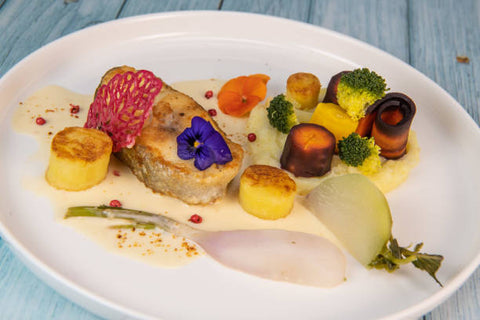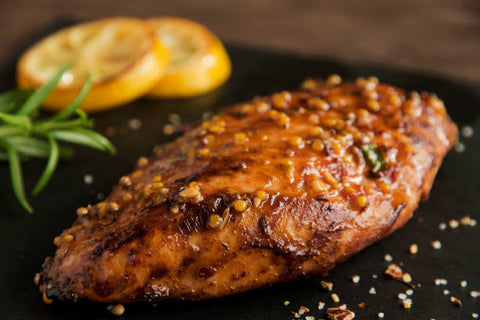French culinary traditions are renowned worldwide for their richness, refinement, and attention to detail. From everyday meals to special occasions and festive celebrations, French cuisine shines with a wide array of holiday specialties and festive delicacies. These culinary traditions have deep historical roots and continue to be cherished and preserved in modern-day France. Let's embark on a journey to explore some of the notable holiday specialties and festive delicacies that grace French tables during special occasions.
- Christmas Delights:
Christmas is a time of joy and indulgence in France, and the culinary traditions surrounding this holiday are truly delightful. One of the most iconic Christmas treats is the Bûche de Noël, a Yule log-shaped cake made of rolled sponge cake, filled with flavors like chocolate or chestnut cream, and decorated to resemble a log. Another festive favorite is Foie Gras, a luxurious delicacy made from the fattened liver of ducks or geese, often served with toasted brioche and sweet fruit compotes. Oysters are also a cherished tradition, enjoyed fresh on Christmas Eve. Other delicacies include smoked salmon, truffled dishes, and various festive pastries like Galette des Rois, a puff pastry cake filled with almond cream, often enjoyed on Epiphany.
- Easter Extravaganza:
Easter in France is celebrated with an abundance of delicious dishes, showcasing the arrival of spring flavors and ingredients. One prominent feature of Easter is the Coq au Vin, a classic French dish that traditionally features a rooster cooked in red wine with onions, mushrooms, and herbs. Lamb is another Easter highlight, with roasted or grilled lamb chops served with seasonal vegetables. Chocolate eggs and bunnies take center stage in the form of decadent desserts, such as the exquisite Chocolate Mousse Cake and the whimsical Chocolate Easter Nests.
- Galette des Rois:
The Galette des Rois (King's Cake) is not only enjoyed during Christmas but also holds a special place in French culinary traditions during the celebration of Epiphany on January 6th. This delectable puff pastry cake, filled with almond cream, hides a small charm or figurine inside. The person who discovers the charm in their slice is crowned the "King" or "Queen" and gets to wear a paper crown. Sharing the Galette des Rois is a joyful tradition that brings families and friends together.
- Bastille Day Festivities:
Bastille Day, the national day of France celebrated on July 14th, is marked with numerous festivities and culinary delights. Picnics and outdoor gatherings are popular, where people enjoy traditional French dishes such as Quiche Lorraine (a savory pastry filled with eggs, cream, bacon, and cheese), Pâté en Croûte (a savory pie filled with various meats and encased in a pastry crust), and Ratatouille (a vegetable medley of eggplant, zucchini, peppers, and tomatoes). Festive fireworks and parades add to the atmosphere of celebration.
- Mardi Gras Delights:
Mardi Gras, or Fat Tuesday, is a festive occasion celebrated with indulgent foods before the start of the Christian season of Lent. In France, one of the most beloved Mardi Gras treats is the Galette des Rois, which we mentioned earlier. Another popular delight is the King Cake, a sweet and colorful brioche-like cake decorated with icing and sprinkles. It is often filled with fruit compote, chocolate, or almond cream. In some regions, like Alsace, Mardi Gras is celebrated with deep-fried pastries called Bugnes or Beignets, which are sprinkled with powdered sugar and enjoyed while still warm.
- Bastille Day Specialties:
Apart from the festive atmosphere, Bastille Day is marked by a variety of traditional French dishes. Some of the highlights include Coq au Vin, a stew made with chicken, red wine, mushrooms, and onions; Bouillabaisse, a flavorful seafood soup originating from the southern region of Provence; and Crêpes, thin and delicate pancakes that are often filled with sweet or savory fillings, such as Nutella, fresh fruits, or cheese and ham. Celebrating Bastille Day is also an excellent opportunity to enjoy a selection of fine French cheeses, such as Camembert, Roquefort, or Brie, accompanied by crusty baguettes.
- New Year's Eve Celebrations:
New Year's Eve, known as "Réveillon," is a time for grand feasts and celebrations in France. It is customary to begin the meal with an assortment of appetizers, including Foie Gras, smoked salmon, and escargots (snails) cooked in garlic butter. As the night progresses, a variety of luxurious dishes are served, such as Lobster Thermidor (lobster with a creamy sauce), Beef Wellington (tender beef wrapped in puff pastry), or Blanquette de Veau (a delicate veal stew in a creamy white sauce). For dessert, Champagne-soaked desserts like Champagne Sabayon or Baba au Rhum (rum-soaked cake) are popular choices.
These holiday specialties and festive delicacies are cherished in France and contribute to the country's culinary heritage. Each dish carries a rich history and reflects the regional diversity of French gastronomy. Whether it's the exuberance of Mardi Gras, the pride of Bastille Day, or the anticipation of a new year, French culinary traditions bring people together to celebrate and savor the flavors of these special occasions.
All in all, French culinary traditions shine brightly during special occasions and festive celebrations. Whether it's the indulgent Bûche de Noël at Christmas, the Galette des Rois for Epiphany, or the array of savory dishes enjoyed during Bastille Day, French cuisine showcases its diverse flavors, meticulous craftsmanship, and the joy of sharing food with loved ones. These holiday specialties and festive delicacies represent the essence of French culinary heritage, inviting everyone to savor the unique flavors and experience the rich traditions of the country's gastronomy.



